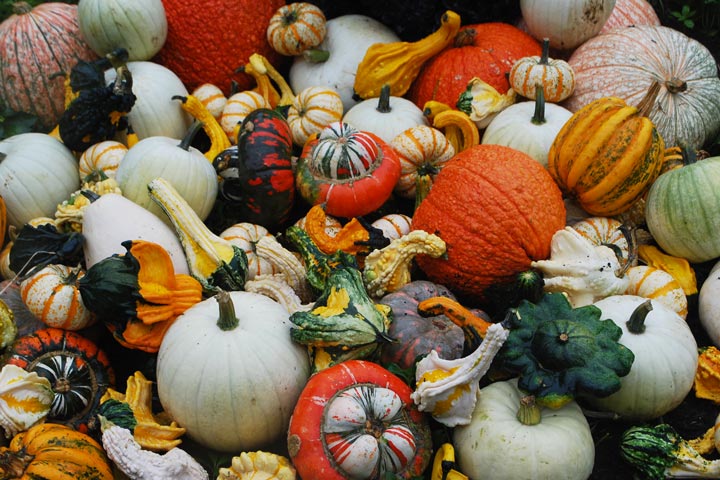
How to Dry or Cure Gourds
For thousands of years, gourds have been grown and used by many cultures as useful tools and utensils. We still grow many types of gourds, but today we mostly think of gourds as decorations and whimsical birdhouses or containers.
Gourds are close relatives to pumpkins, squash and other vegetables in the Cucurbitaceae family, like cucumbers and melons, and they are just as easy to grow.
Types of Gourds
There are dozens of gourds, but 2 basic types are grown and used decoratively:
Cucurbita or soft-skinned gourds – These are the colorful orange, gold and green gourds that look like small squash and come in odd, fun shapes. Cucurbita gourds are usually used fresh as wonderful fall decorations. They are beautiful as is and can also be carved and used as luminaries, flower pots or dishes. It’s possible to dry and save them, but their bright colors will begin to fade in a few months.
Lagenaria or hard-skinned gourds – These larger, utilitarian gourds include the familiar Birdhouse, Bottle and Dipper gourds. Hard skinned gourds grow green on the vine and eventually turn the familiar shades of tan and brown, as the shells dry. Interestingly, Lagenaria gourds have white flowers that bloom during the night, unlike the usual yellow blossoms of most squash that we see during the day.
Harvesting Ornamental Gourds
- Whatever type of gourd you are growing, it is ready for harvesting when the stems dry out and turn brown.
- Cut the gourds with a few inches of stem intact.
- Harvest all gourds before a hard frost. Immature gourds will not last long, but frost will ruin soft skin gourds entirely and even a light frost can alter the color of hard skin gourds and affect their ability to dry.
- Discard bruised and spoiled gourds. They will just begin to decay in storage.
Curing Ornamental Gourds
Curing or drying ornamental gourds requires time. There is no shortcut, like micro-waving. The outside of the gourd must dry completely and then it will take another several months for the inside of the gourd to dry and cure. Lagenaria gourds can take twice as long to dry as Cucurbita gourds.
1. Start by cleaning the surface of the gourds with soapy water and allow them to air dry. You can wipe them with rubbing alcohol to further ensure the surface dries completely.
2. Place in a well-ventilated area away from direct sunlight, for about 1 week. The skin will begin to harden and change color. After a week, the outside of the gourd should be well dried.
3. Move the gourds to a well-ventilated, dark area where they can remain for at least 6 months. Spread them in a single layer and be sure none of the gourds are touching each other. Allow for air flow under the gourds by placing them on a screen or vented surface. It may be easier to hang larger gourds for drying.
4. Check your gourds every few days and discard any that begin to decay, shrivel or get soft. If mold appears, see if you can wipe it off with a dry cloth or one dipped in bleach. If the gourd is still hard, it should be fine. Drying gourds is not a pretty process.
5. Turn the gourd every couple of weeks, so it will dry evenly and to prevent rotting.
6. When the gourds become light and hard to the touch, and you can hear the seeds rattling inside when you shake them, they are ready for use. At this time you can carve, paint, wax, shellac or decorate your ornamental gourds any way you wish. Hard-shell gourds, such as birdhouse gourds, may still be rough or peeling and can be smoothed and polished up with steel wool or fine sandpaper They should last indefinitely.
Growing ornamental gourds can become an obsession. Luckily there are many different types to grow and even when your mantle can’t hold anymore, they make welcome gifts 😉

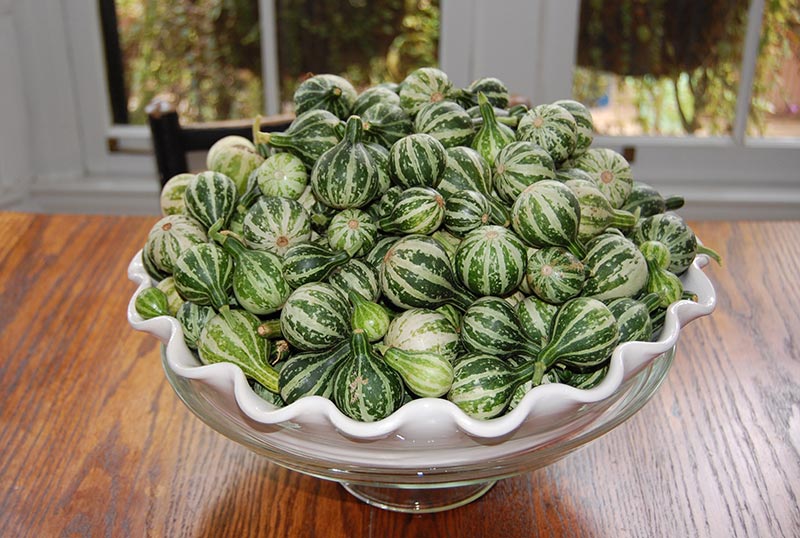
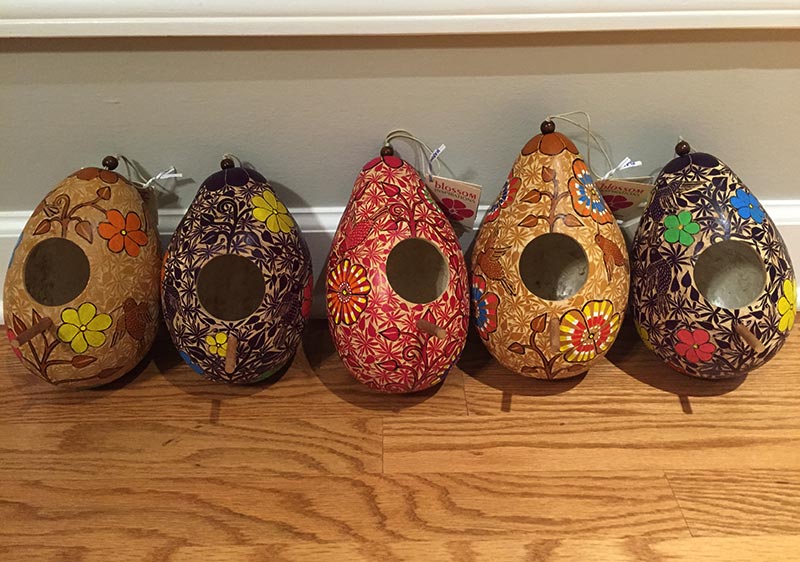
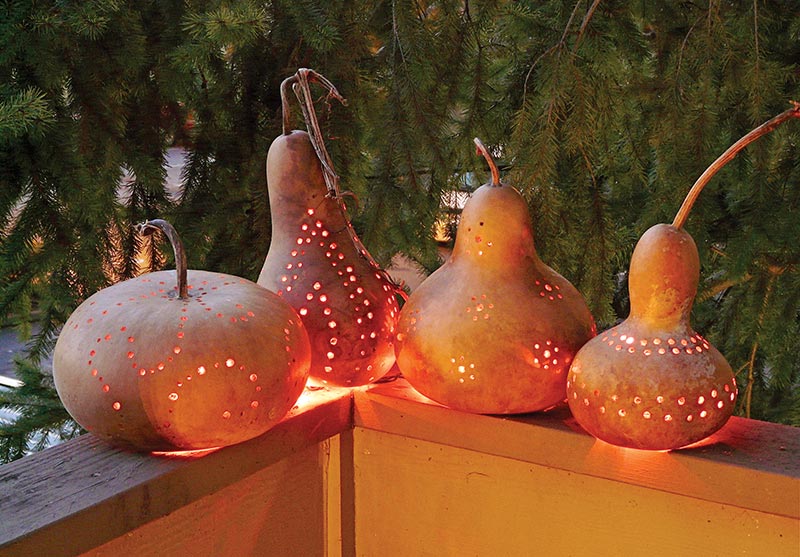
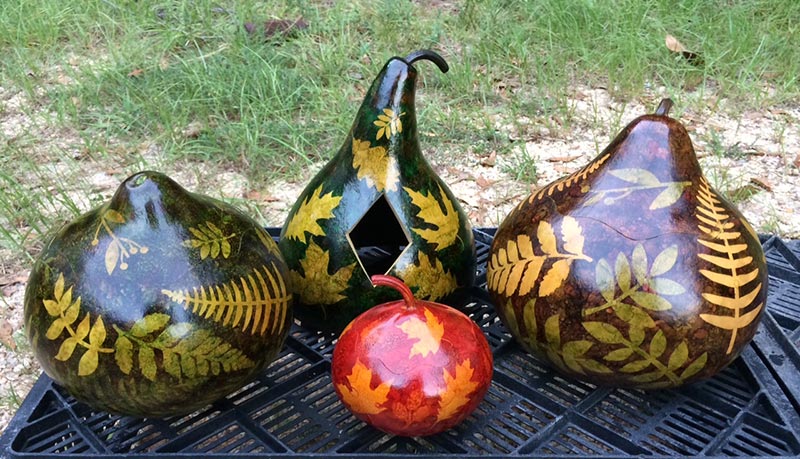
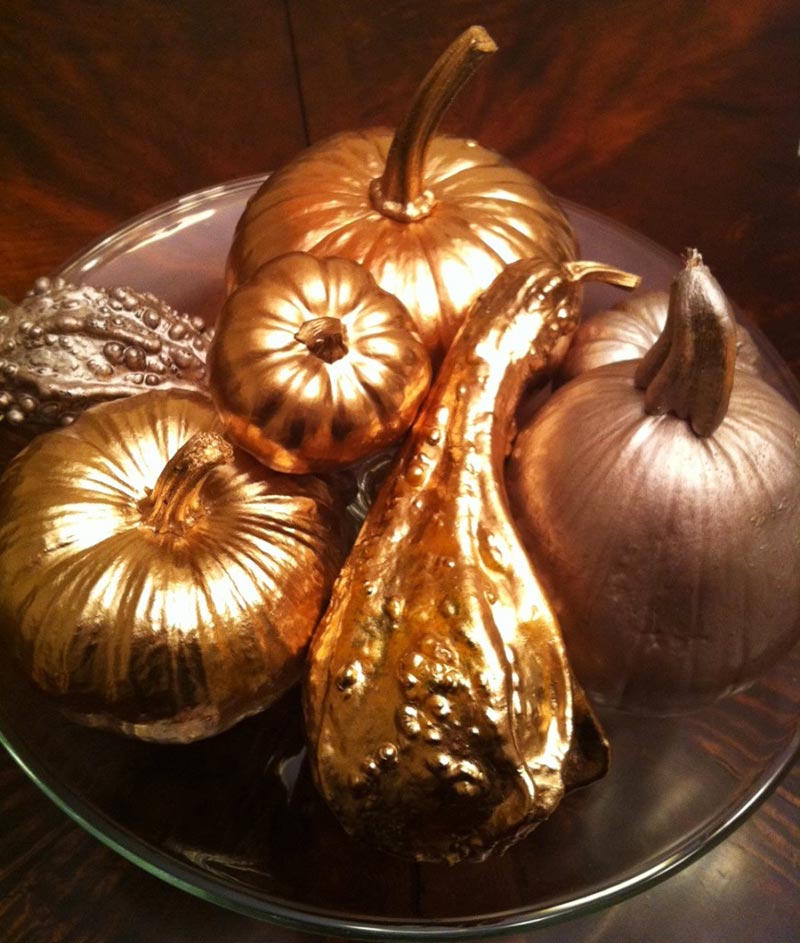



Leave a Reply